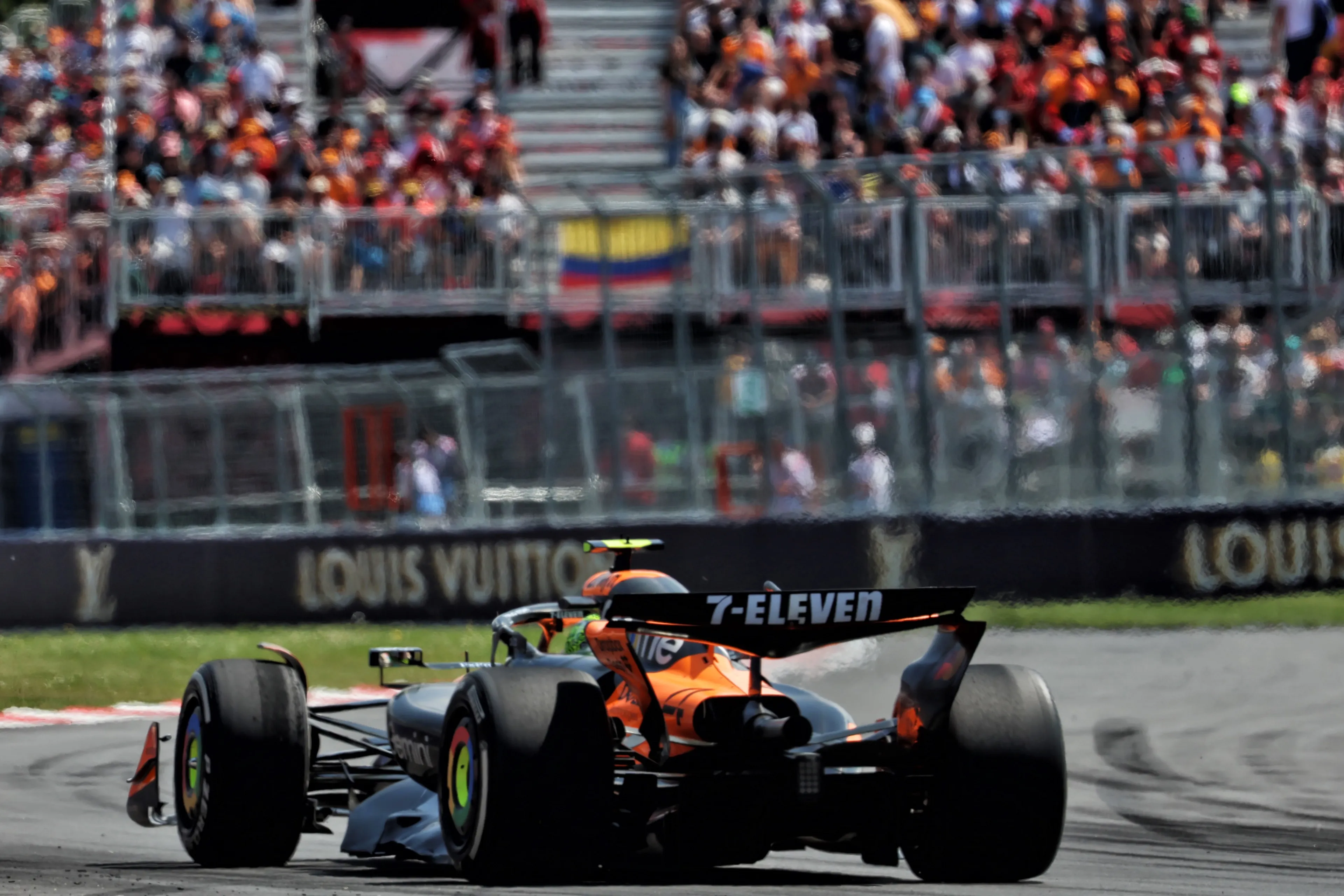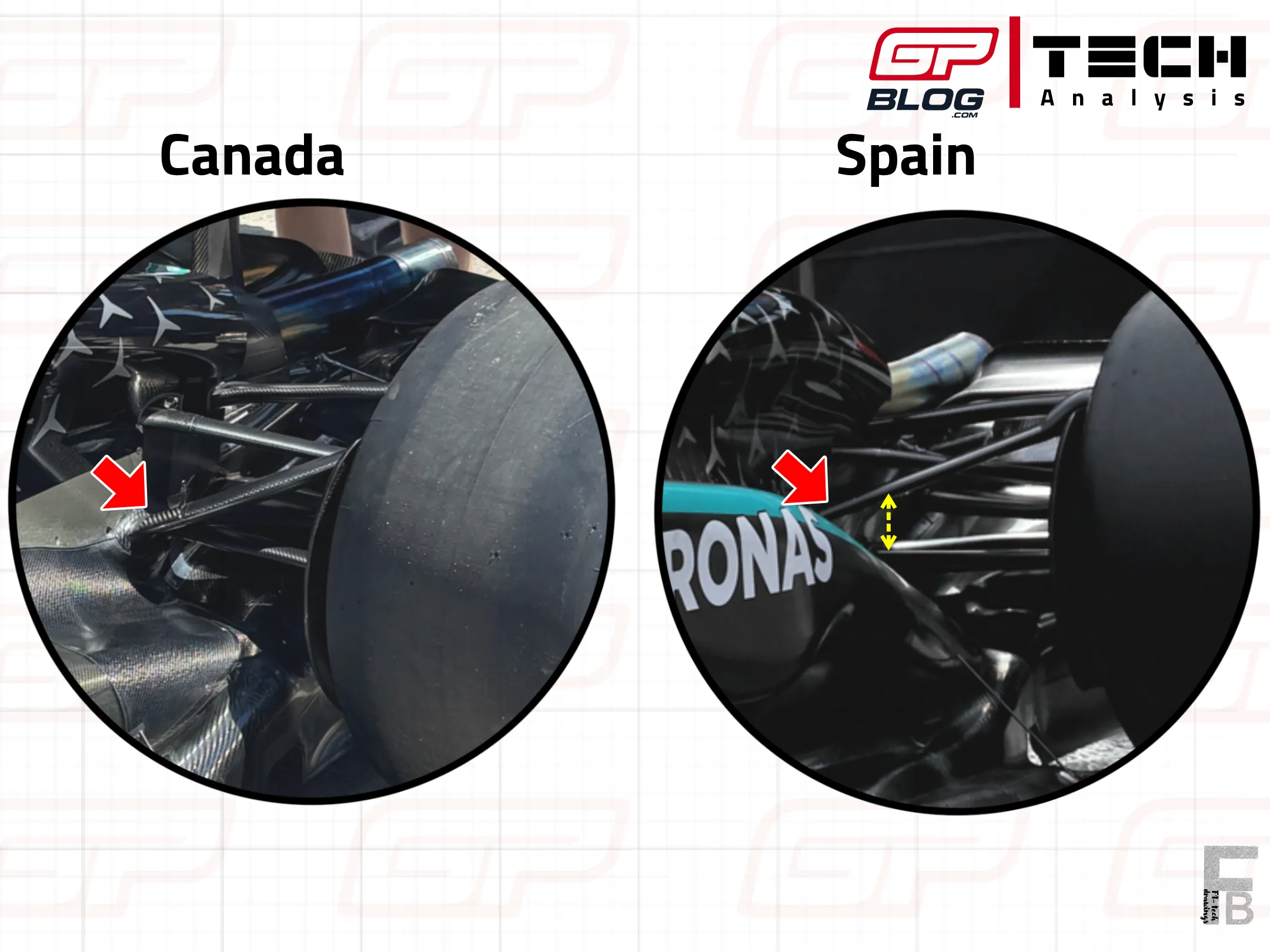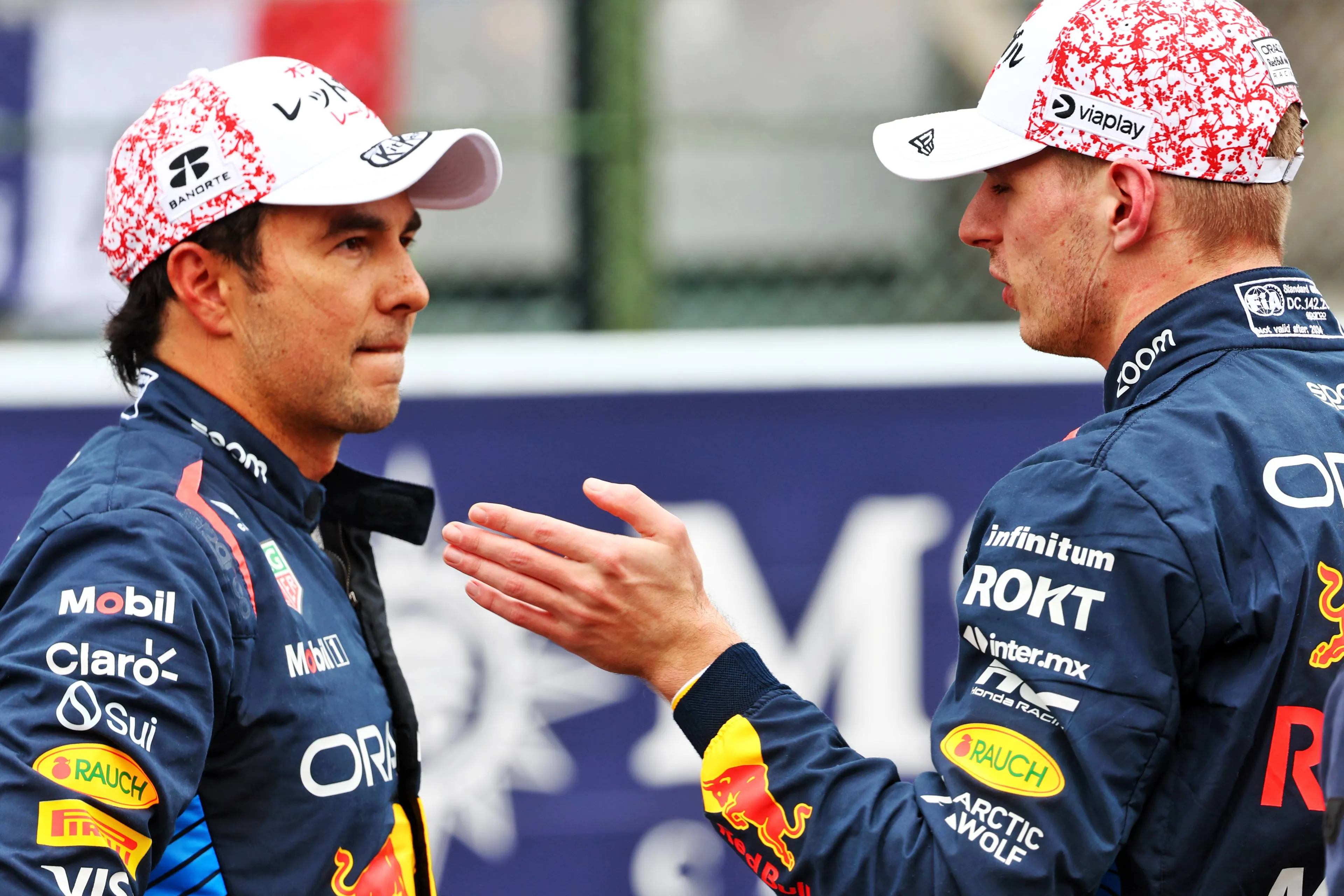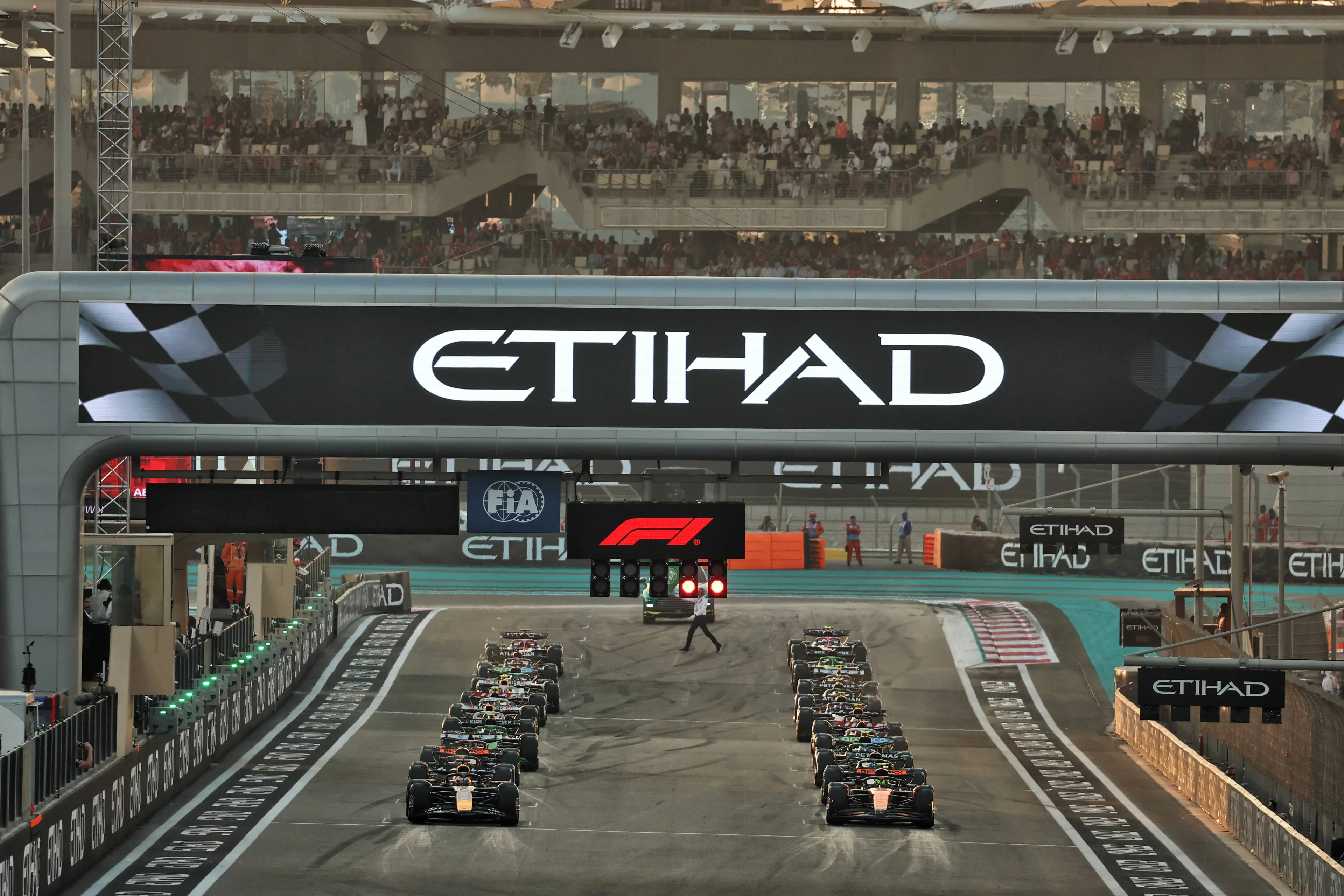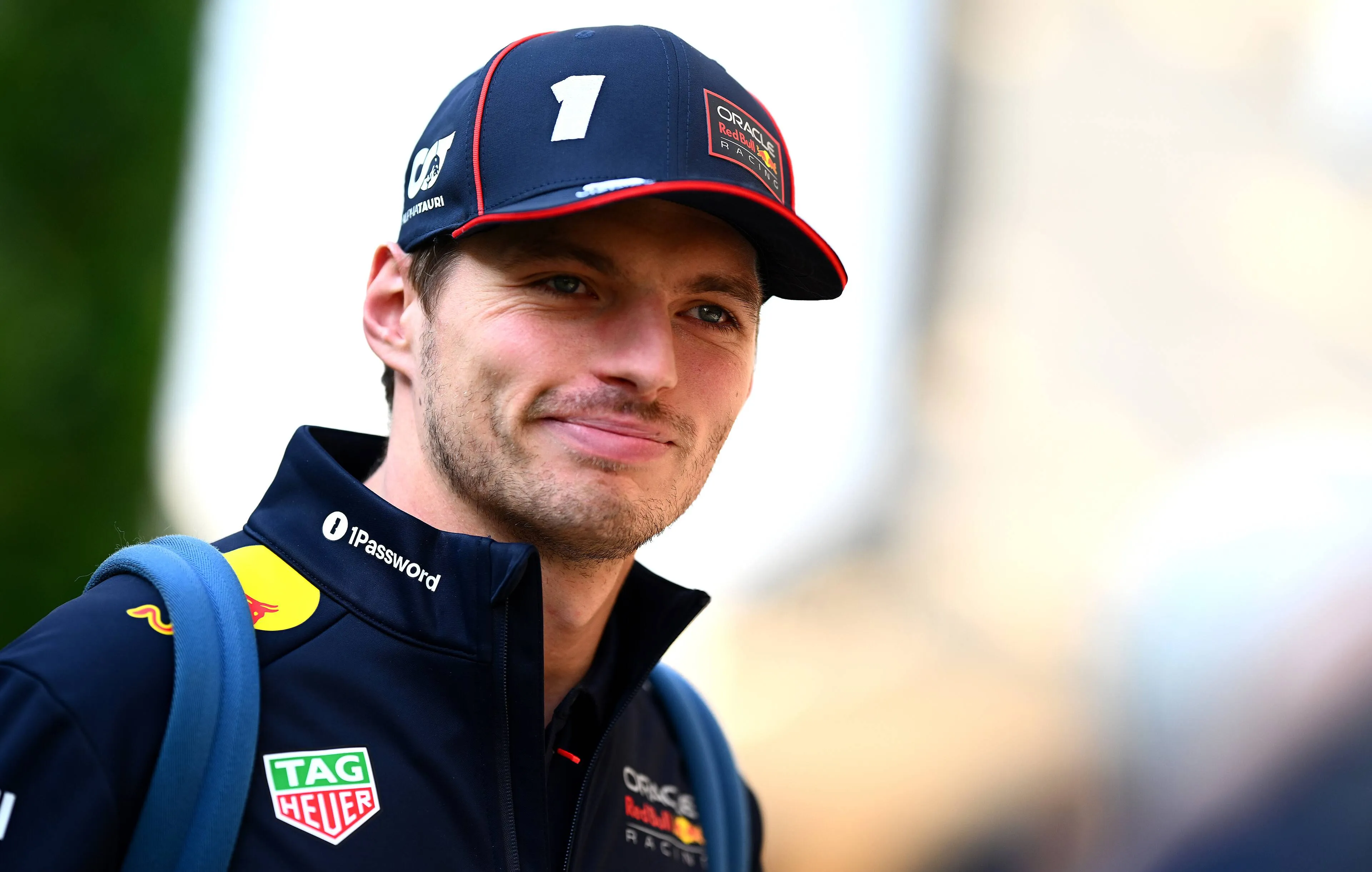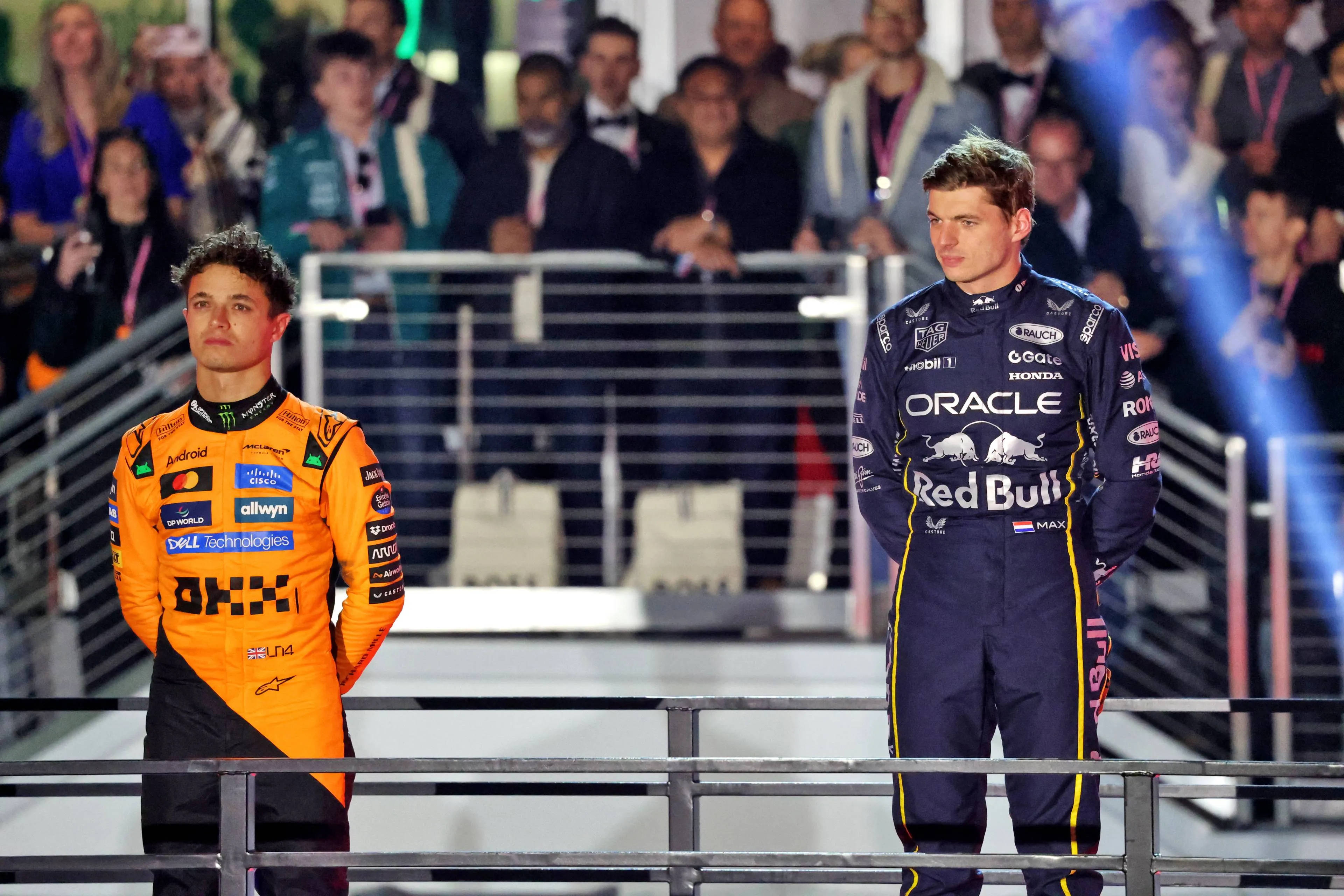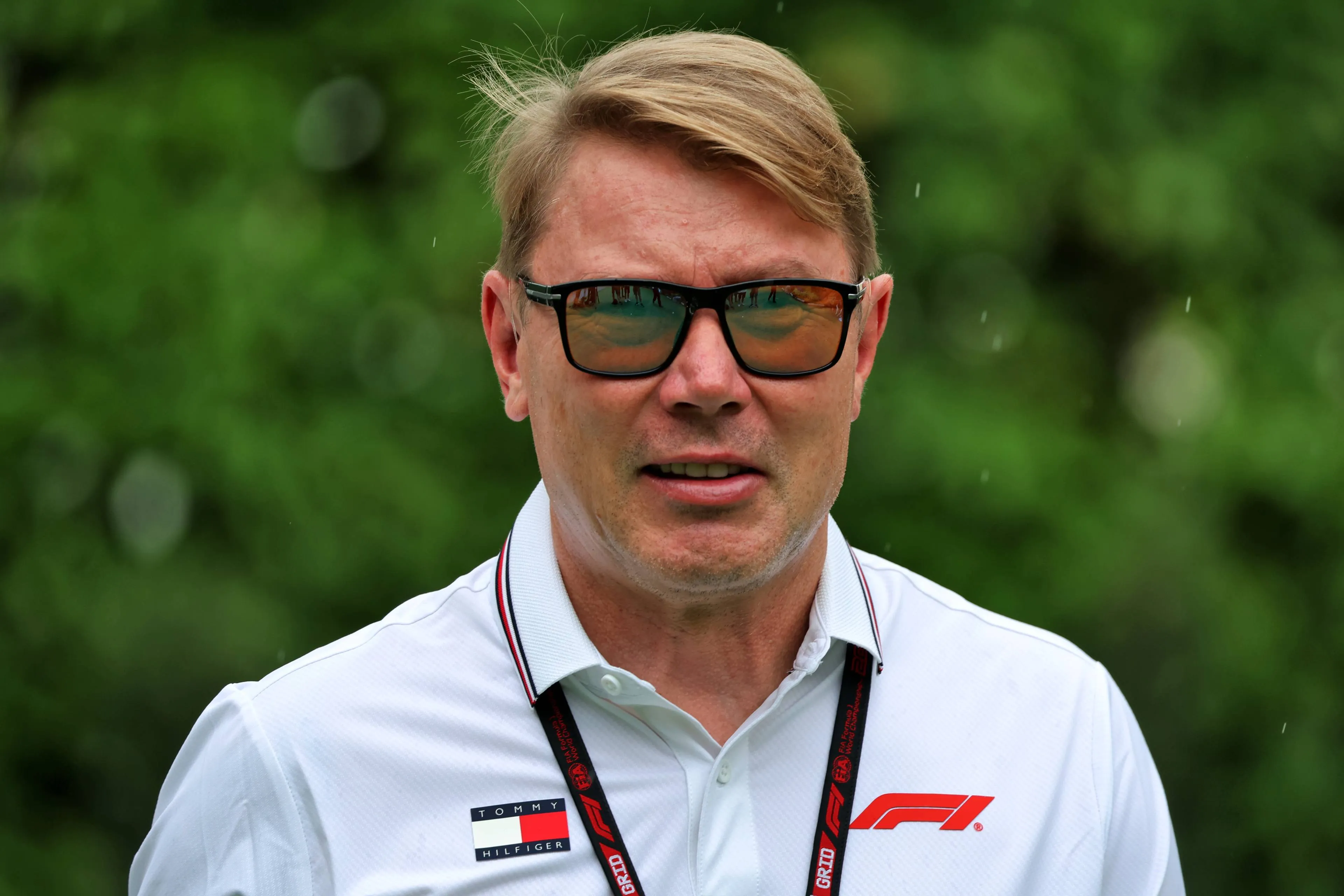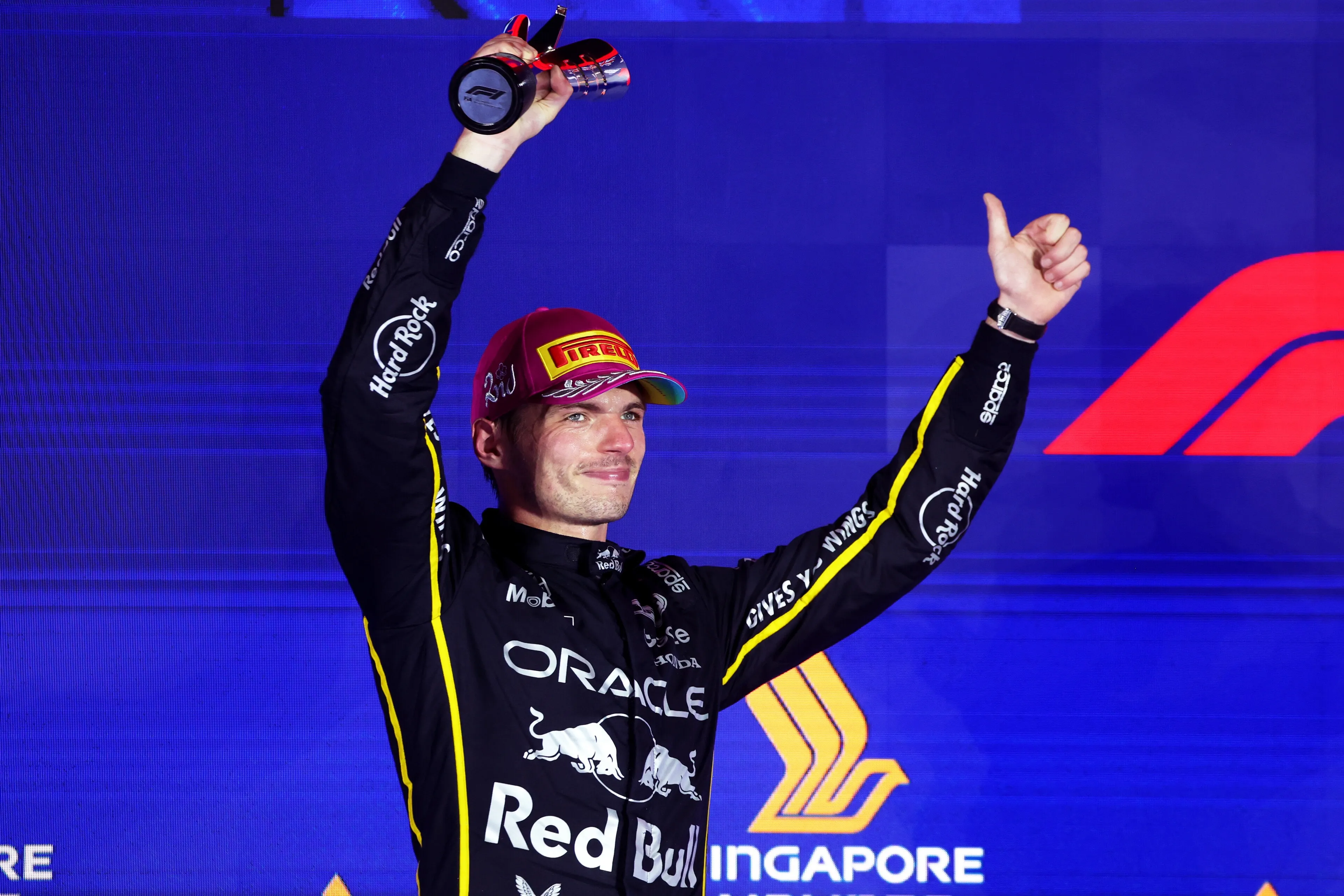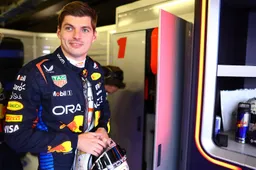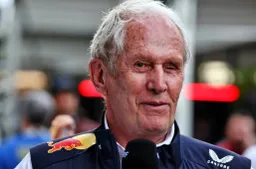The Austrian Grand Prix saw a very comfortable McLaren 1-2 finish, despite some close battles between the two drivers. The circuit layout, together with the high temperatures faced during the race, inevitably exploited some of the MCL39’s strengths, which has also improved thanks to small updates. Let’s unveil all the aspects behind this great performance.
For the 11th round of the season, McLaren decided to bring back some of the new components already tested in Canada, including the revised front wing and the new medium downforce rear wing, to better evaluate them on a more representative circuit like the Red Bull Ring.
The new front wing was tested both by Piastri and Alexander Dunne (who took part in FP1 driving Norris’ car), who ran a series of laps with aero-rakes on and made comparisons between the two specs.
The new front wing version is characterised by a series of vortex generators at the connection between the top two flaps and the endplate. The goal of these new components is to increase the outwash effect on the portion of the front wing, reducing the drag impact produced by tyres and pushing the air around the tyres to also better control the wake (i.e. the turbulence) generated by them.
After completing many laps with the new version, McLaren decided to fit this version on both their cars from FP2 onwards, proof that this new spec was a positive step forward in overall performance.
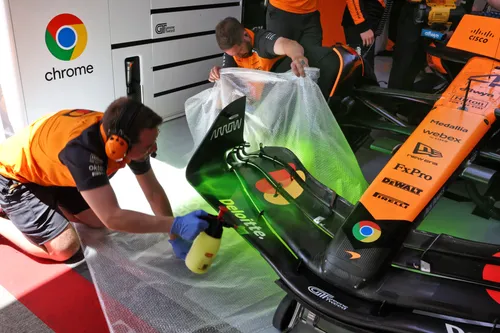
The new front wing used in Austria
Similar tests were made with the new rear wing: McLaren introduced this new medium downforce version in Canada and used it for the whole weekend. However, due to the Red Bull Ring being 700 meters above the sea level, the team tested two different rear wing specs on Friday to understand which one was more suitable to the thinner air conditions.
As highlighted in the drawing below, the two versions seem very similar, but differ in some crucial details: the medium downforce version adopted by Dunne in FP1 and by Piastri in FP2 is characterised by a deeper and larger spoon in the central portion of the main plane, as highlighted by the red arrow. It’s also visible that the connection to the endplates is much softer, meaning this spec produces more downforce and thus, more drag.
On the other hand, the version used by Piastri in FP1 and then by Norris in FP2 is a slightly lower downforce wing, as the mainplane is characterised by a very small “V” shape spoon in the central portion (blue arrows), with a steeper connection to the endplates (red arrows), which mainly aims at producing a decent level of downforce but at a lower level of drag.
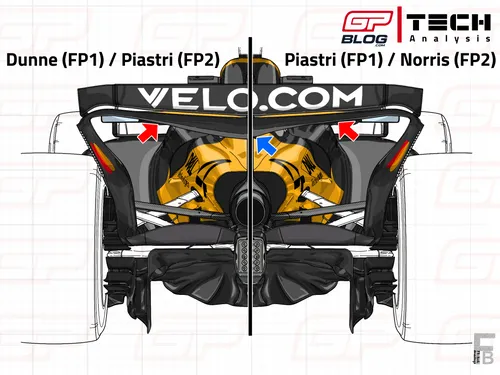
The rear wing comparison run by McLaren on Friday in Austria
After these comparisons were made on Friday, the team decided to adopt the new, lower downforce rear wing on both cars from FP3 onwards, proving that also this new component worked perfectly on such a fast flowing layout.
Last but not least, after the race on Sunday, team principal Andrea Stella told Sky Sport F1 that this weekend they’ve also introduced some small changes to the chassis: “I also like to bring to the attention of our spectators the fact that there have been many updates brought for this Grand Prix: a new front wing, front air intakes and also changes to the chassis.”
A dominant MCL39 in every section of the track
All these new components seemed to work perfectly together, making the MCL39 unbeatable since Friday on a track that perfectly suited the car’s characteristics: the medium high speed sections in Sector 2 and 3 (like turn 5/6, turn 7/8 and turn 9 and 10) were a happy hunting ground for the two McLaren drivers, proof of the great stability of their car and the high level of downforce generated by the bodywork.
Moreover, the car also expressed a perfect balance in the medium and slow speed corners of the circuit, where traction was needed to then have good performance on the straights.
Particularly significant is the fact that Norris was able to set all three purple sectors during his best lap in qualifying, demonstrating the versatility of the MCL39, which was perfectly set up by the engineers to express its full potential in all sections of the track and under different conditions.
Another aspect that inevitably favoured McLaren this weekend was the rough nature of the tarmac: being a track largely used during the year and having quite a “old” laid tarmac, Red Bull Ring is well known for being a very harsh circuit on rear tyres, which are put under great stress due to the traction zones.
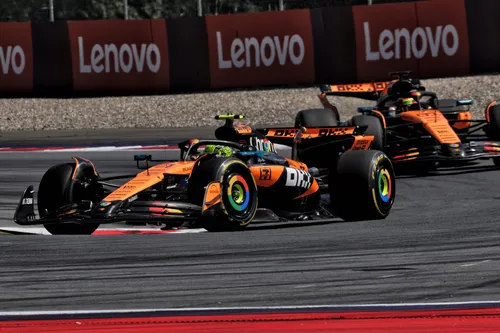
Norris and Piastri during the race
The MCL39, thanks to its ability to keep temperatures under control and look after their tyres (especially on rear limited circuits), was in its perfect habitat: immediately during Friday race pace simulations, Piastri and Norris were very quick and constant during their stints, proof of the great balance of their car.
On Sunday their advantage was made bigger by the higher temperature: with the tarmac hitting 50 degrees at the beginning of the race, McLaren demonstrated to be able to manage the softer tyres (first and last stint on the mediums) better than any other car on the grid.
Piastri and Norris were pushing hard during the first 20 laps of the race, fighting against each other while also gaining time on Leclerc in P3, which proved that even though they were putting their tyres under great stress during the first half of the race, they still had a good margin over their competitors.
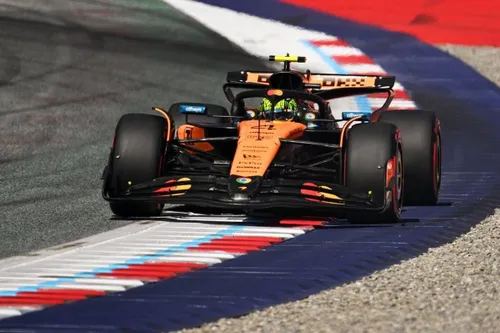
Norris during his lap in Q3
The fact that Leclerc finished at almost 20 seconds behind the leader (on a 65 second circuit) is quite indicative of how much more pace the two Papaya cars had.
The high temperature also highlighted one of the MCL39's big strengths: the cooling system. As already underlined after Miami by Andrea Stella, McLaren’s engineers did a phenomenal job with the cooling system design during the winter. As a consequence, their car is now able to run much closer than competitors even with such high temperatures: this gives them a big advantage in terms of aerodynamic efficiency, with overall lower drag and less fuel consumption.
For all the reasons just mentioned, McLaren had a very good weekend and was able to get the fourth 1-2 of the season, with quite a gap from competitors. Verstappen’s retirement from the race extinguishes his hopes of battling for the Drivers’ Championship, meaning that it’ll only be a McLaren affair from now on to Abu Dhabi.
From the technical point of view, McLaren have everything they need to be competitive in all races, especially with such high temperatures. Difficult tracks for them could be Monza or Las Vegas, where the cold conditions and short, slow-speed corners may hinder them, but surprises may still occur.
Read also
Read more about:
Popular on GPBlog

1
The first 2026 Formula 1 car is fired up as a 'new era comes to life'
2398 times read

2
Happy New Year! GPblog wishes everyone a healthy and happy 2026!
2094 times read

3
Kelly Piquet shares beautiful photos from holiday with Verstappen and family
600 times read

4
Mercedes hasn’t missed Hamilton in the car since his move to Ferrari
563 times read
Loading


